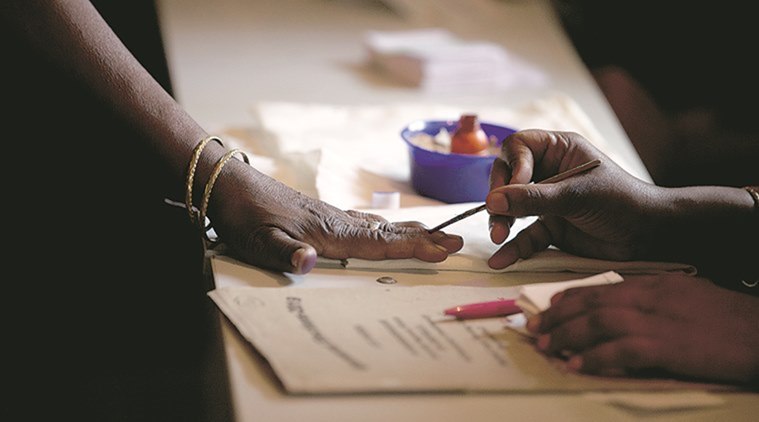
People living in Bihar shudder at the mere mention of this era. It doesn’t take one by surprise if we were to call the 1990s the darkest phase of Bihar’s electoral history. The period must have a special mention in the Guinness World Records for registering the maximum number, and probably worst forms, of electoral violence perpetrated in this state.
Yes, there are myriads of records of violent elections in the developing world, but their tolls are just no match for Bihar. A poll watcher might jump onto the bandwagon and say that, look, 270 people died in last month’s general elections in Indonesia. But look carefully, this is the number of poll staff succumbing to fatigue resulting from counting millions of ballots, and no violence.
Though almost all Hindi heartland states witnessed moderate to heavy electoral violence during this period, Bihar certainly accounted for the major chunk. Bihar’s history of electoral violence during 1990-2004 is replete with incidents of murder, loot, arson, kidnapping, intimidation, and other crimes. For the electorate, the poll season always came as a time to practise caution in general life. For the contestants, too, this was a harrowing time. But the major difference was that while the contestants either won or lost, the electorate always lost. Lost lives, lost rights, lost property, lost dignity.
Official statistics say 641 lives were lost to poll-related violence during a total of nine elections between 1990 and 2004. Out of this, 196 people died only during panchayat polls in 2001, which had been held after a long gap of 23 years in Bihar. A total of 28 lives were lost in the 2004 Lok Sabha elections. All these people died either in the run-up to elections, or on the poll day itself, or in many cases, even after the polls were over in a constituency. Law and order had hit rock bottom.
Let’s compare these figures with those of the Lok Sabha elections of 2009 and 2014 and the assembly polls of 2005, 2010 and 2015. Eight lives were lost to incidents of grievous nature in the above-mentioned two Lok Sabha elections and seven in the above three assembly elections taken together. The last assembly elections in 2015 saw not a single casualty for such incidents. This looks miraculous, but is a fact.
Hundreds of crimes were spun around just one purpose, booth loot. This practice dates back to 1927 when a re-poll was ordered, during district board elections, for the first time in the electoral history of Bihar, and probably India. However, there’s no official record of it. And then it went on to scale new heights. Initially, booth loot was the “business” of a “few”, but its gradual passage into the hands of criminals, who later themselves began testing their mettle by contesting polls rather than merely working for their “lords”, first maligned and then finally tore apart the very character of political institutions.
Booth loot and the consequent re-poll and countermanding of polls had become a norm. Lok Sabha elections were countermanded in Patna twice, in 1991 and 1998. This was the state of the state capital. Imagine what could have happened in smaller towns and villages. There are well kept dossiers of the reports sent by the returning officers to the Election Commission and to the state government. Even the decisions of the Election Commission regarding the countermanding of polls were contested at times. But then those decisions were purely based on what returning officers wrote in their reports. In Chhapra, in 2004, the Election Commission had a great deal of difficulty in calling it a void. Finally, the poll was countermanded. These are just a couple of glaring examples.
Many other incidents of countermanding are well documented in the media and recorded on the government files. An incident worth a mention here is when two dozen legislators, including ministers, had been apprehended, capturing booths during the 1998 Lok Sabha elections. There can’t emerge a more gloomy picture if one looks at the number of times a re-poll was ordered in the state. The very tools of representation were given a silent burial. Can you imagine, polls were reconducted on 4,995 booths in just one state, that is, Bihar, and in just one election year, that was the 1998 Lok Sabha elections.
Compare this with the Lok Sabha elections of 1952 when only 26 booths went to a re-poll. So, booth loot became a far more organised “business” and the number of re-polls ordered more than quadrupled 45 years after the country’s first election. Assembly elections were not far behind in leaving their own mark. During the assembly elections of 1995, a re-poll was ordered on 1,668 booths. Similarly, 1,420 booths saw a re-poll during the assembly elections in the year 2000.
By the time the ballot went electronic and Electronic Voting Machines (EVMs) made their advent in Indian elections in 2004, the electorate had lost faith in due process and subsequently the voting percentage had also nosedived in Bihar along with a few other north Indian states. By the way, even the EVMs were not spared. News of EVMs destroyed by miscreants during the process of electioneering abounded those days. And then some icing on the cake was also in waiting.
This became available when the management of a poll area on polling day was put to the test. Against the usual talk of EVM “tampering”, which has all so far been proved false and termed a gimmick, I would talk of their “management”. It wasn’t unusual those days for journalists to report how deployment of police and paramilitary forces was tampered with, so that EVMs, or say a booth, can be “managed”, forget “tampered”.
Post-2004, why is it so difficult to document such “management” at poll booths, or destruction of EVMs, or tampered deployments of security forces, or, the near-impossible now, a booth loot? That’s food for thought.
The writer is Deputy Chief Minister of Bihar